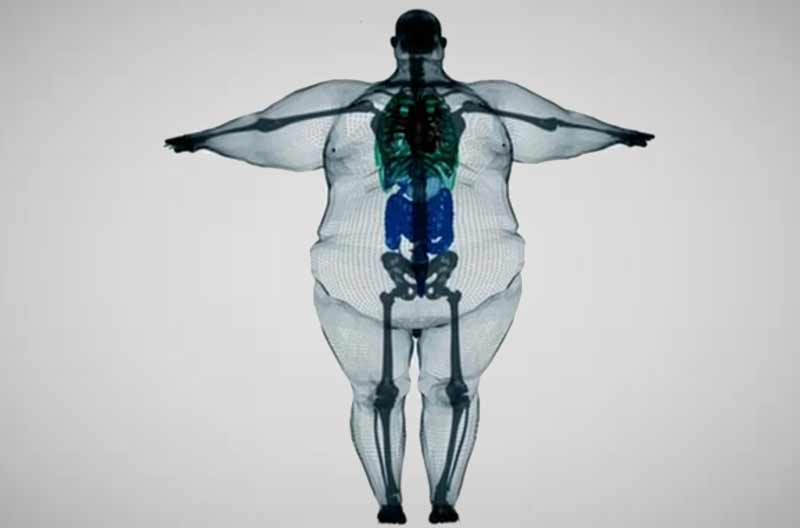Today’s lifestyle is very stressful and agitated. The lack of time to take care of ourselves expose us to many diseases which were not common in the past decades. Nowadays statistics show that more and more people suffer from a chronic illness caused by unhealthy eating habits and stress like obesity and diabetes. Even more alarming is the steadily decreasing age of individuals diagnosed with these health problems. Being diagnosed with one or both of these medical conditions could be a scary thing, but if you are informed on the way they change your body you can be prepared to face and overcame all the challenges.
What is Diabetes?
Diabetes Mellitus, also known simply as diabetes, is one of the most common chronic disease of our era described by high levels of blood sugar caused by the body’s inability to produce or process insulin, a substance which can maintain blood sugar levels within normal parameters. Even if this condition seems to be a new affection, it exists for centuries, and it has the reputation of being passed from one generation to another. Too high or too low blood sugar levels are dangerous for health or even fatal. A normal level of glucose in the blood is essential for the proper function of all the vital organs. The pancreas is responsible for producing insulin, a hormone which can remove sugar from the blood and transform it into energy.
There are two important types of diabetes:
- Type 1 diabetes – is most frequently diagnosed in young people (children and teenagers) and its cause is the body’s inability to produce insulin. This kind of diabetes is also known as Insulin-Dependent Diabetes Mellitus
- Type 2 diabetes – is more common than type 1 and represents about 90% of the diagnosed cases. It is more likely to affect people over the age of 40, but in the past years, the patient’s average age decreased considerably including a teenager and even children. This type of diabetes is also known as “insulin resistant” or Non-Insulin Dependent Diabetes Mellitus
The consequences of this health problem go much beyond a simple high blood sugar level. Unfortunately, diabetes ranks about the major causes of mortality un the USA and all over the world. Among the severe health issues diabetes can cause are blindness, end-stage kidney disease, cardiovascular complications, strokes and non-traumatic lower extremity amputations in adults. Recent studies revealed that more than 9% of the American population suffers from diabetes and 1 out of 10 are not even aware of their condition.
What is the connection between type 2 diabetes and the body weight?
Type 2 diabetes can be triggered by many external factors like an ace, age, stress, pregnancy, some medications, high cholesterol, family history, genetics, and weight. Out of all these risks, obesity and overweight rank as the single best predictor of this type of diabetes. Almost 90% of the people diagnosed with this health problem are also obese or overweight. The body’s ability to process insulin decreases dramatically in people with obesity which eventually will lead to developing type 2 diabetes. Medical studies reported that the rapid increase in diabetes diagnoses is directly connected to the growing number of obesity cases in the United States.
Can Diabetes by Prevented?
Luckily, this medical condition is largely preventable. Making some lifestyle adjustments to lose at least 5-10% of the body weight can result in delaying or preventing the development of diabetes for adults with high risk. Changing the diet and adding at least 30 minutes of moderate-intensity physical effort each day can help with the weight loss.
If a person is overweight, it has higher chances of developing diabetes, but making efforts in reducing the body weight is the most efficient measure in preventing the likelihood of developing this life changing disease.
How can diabetes be managed?
If you couldn’t prevent the development of diabetes, you must know that there are ways to keep the blood sugar levels under control by wisely choosing your foods, reducing the stress level, exercising regularly and taking the necessary medication. Patients diagnosed with type 1 diabetes must be careful to apply insulin exogenously to compensate the body’s inability to produce this substance, while those with type 2 need to use insulin or special medication to lower the level of glucose in the blood.
Of course, all drugs carry certain risks. Both medication and exogenous application of insulin can determine the opposite situation, of low blood sugar, also known as hypoglycemia, which brings other dangerous side effects like unconsciousness, seizures or death. Weight loss, even if it seems insignificant, can help controlling the blood sugar levels and reduce the intake of medication. Finally, with a better nutrition diabetes can be stopped from progressing and as a result so are the complications associated with this health condition.
Medical studies proved that there is an undisputed connection between obesity and diabetes. Type 2 diabetes is very common in obese people, especially if this condition is part of the medical history of the family. That is why maintaining healthy body weight is essential for reducing the chances of developing this type of chronic disease.
What is the cause of obesity?
The genetic inheritance from our parents has a significant influence on where and how the body stores the fat. Although scientists haven’t yet found the particular gene responsible for obesity, it is considered to play an important role. It is undeniable the fact that the genetic luggage of a person can determine a predisposition to overweight or obesity, which means that some people are more susceptible than others to becoming obese under the influence of certain external factors like high-calorie diet and sedentary lifestyle.
The outside factors have a greater impact on the likelihood of people becoming obese than genetics does. The two most important factors of obesity are lack of physical effort and high fats diet. In the obesity equation, genetics plays only a small part, and the most important factors are the foods we eat every day and amount of exercise we do.
There is even a mathematical formula developed by nutritionists to establish exactly each person’s weight category. Through this method, the body mass index is given a number which will indicate if hat person is obese or not. Body mass index is calculated by dividing the weight by the double height and multiply by 703 (BMI = Weight/height2 x 703). In order to be accurate weight must be measured in pounds and inches must be used for height. If the result is 19.8 or less, that person is underweight. 26.0 indicates a healthy body weight. Numbers over 26.0 and up to 29.0 suggest this individual is overweight any result over 29.0 is alarming because it is associated with obesity.
What kind of diet is suitable for people suffering from diabetes and obesity?
Food is the primary trigger for both disease so it is essential to find out what should be changed. It is hard to make drastic changes in the eating habits, but it is essential to determine which foods cause the weight gain. Start by keeping a journal where you write down all the details regarding the eating like what, when and how much. Include drinks as well, not only solid food. Information like fat grams or calories associated with each food or drink will prove useful when you look back and try to find out the ingredients in the diet which cause obesity to you or your family.
The number of fats and calories each person can consume daily without hurting the physical integrity varies from one individual to another according to age, gender, body frame and amount of daily physical activity done. Nutrition developed some guidelines to help them determine hoe much one person should eat in order to remain within the normal weight limits. A male could have about 2500 calories daily, while women should only eat 1500 calories a day.
Fast food should be avoided, but if it happens to enter such a restaurant you could request information about the number of calories and fats for each ordered product. This way you can still keep track of the meals you had. The most important aspect of maintaining the weight under control is to have a balanced diet which contains fresh fruits and vegetables, whole grains and small quantities of fat. Carbohydrates should represent an important part of your diets like cereals, rice, and whole grain bread, along with vegetables and fruits. Meat should be low fat, and you can choose among chicken, fish or lean red meat. Avoid using fat when cooking meat and rather roast or grill.
Which is the best way to lose weight?
The market of dietary supplements become one of the most successful in the world as a result of people’s will find a magical pill which will help them become thin overnight. There is a broad range of products which promise miraculous results that one could choose from. In the majority of cases, they are ineffective, or the results are moderate. But the worst part is that some of these products have severe side effects which endanger health or even life. It was proven that once a person stops taking those dietary supplements, they put back double the weight they lost.
The most effective and healthiest way to lose weight is to have a balanced diet and exercise daily. To notice results, physical exercises must be done regularly, which means at least half an hour for minimum three times a week. If you are not a sporty type, try to find an activity you enjoy, like walking in the park or in shopping malls, swimming, dancing or riding the bike.
Are diabetes and obesity passed from one generation to another?
Medical researchers showed that the genetic inheritance has a limited influence over the predisposition to develop obesity and as a result diabetes. The best way to make sure your children don’t become overweight or obese is to provide a healthy diet based on vegetables and fruits and with limited access to snacks, sweets, ice cream and soft drinks. Some changes in the family lifestyle might be necessary. Nowadays, children spend most of their spare time in front of TV or computer, and they must be involved in physical activities on a daily basis.
Diabetes, heart disease, bones and muscular problems or cancer are some of the health consequences of obesity. But not everyone develops diabetes. For this to happen, two factors must work together: a genetic predisposition to this health condition and a proper environment which can trigger such a response from your body. Just like in the case of obesity, the genetical factor has limited powers over the debut of diabetes. Medical studies conducted on twins revealed the importance of the outside factors in the development of diabetes. Even if they have the same genetical inheritance, it was the lifestyle that made the difference when it came to the real influence over the blood sugar levels. If your mother had diabetes, it is important to know the exact type. Type 1 is thought to be inherited from both parents because it affects children and teenagers and nowadays it is the second most common health problem of children in developing countries. Meanwhile, type 2 diabetes affects mostly people suffering from obesity and also requires a small genetical predisposition to the condition.
Obesity and Diabetes Work as a Team, But Both Could be Managed
Because we live hectic lives with long hours at the office, most people eat whatever they can, whenever they can and don’t have time and energy left for exercising. Eventually, the body collapses under all this stress and if the genetical heritage carries the risk for some medical problems it won’t be long until things get out of control. Obesity and diabetes are two of the most common medical affections in our society because they are the result of the life choices we make. As if it’s not hard enough to adjust your life to reach back to normal weight limits, developing diabetes makes thing even more challenging. It was noticed that individuals dealing with weight problems have the highest risk of developing chronical problems with blood sugar levels.
Having your blood or urine tested is one of the most simple ways to determine if someone is developing diabetes or not. If results are higher than normal there is a risk to deal with this condition. Also, certain symptoms could indicate you if the blood sugar levels are too high or too low. Increased thirst, excessive hunger, frequent urination or unexplained weight loss could represent clues for the debut of diabetes. A sedentary lifestyle, advanced age, and high blood pressure are other factors which increase the risk for this disease. Pregnant women could develop type 2 diabetes if she gains more than 10 pounds during this period.
If you are not yet diagnosed with diabetes but you have some concerns regarding this medical problem you must schedule an appointment with a doctor. This is a serious condition which left untreated could lead to severe consequences like blindness, kidney failure or members amputation. The sooner you start the treatment, the easier things will be kept under control. Although both obesity and diabetes are life changing disease, they both can be kept under control by making an adjustment to the lifestyle. Healthy eating habits and regular physical exercises improve the level of glucose in the blood, help with the weight loss and improve the overall health.
Resources:






